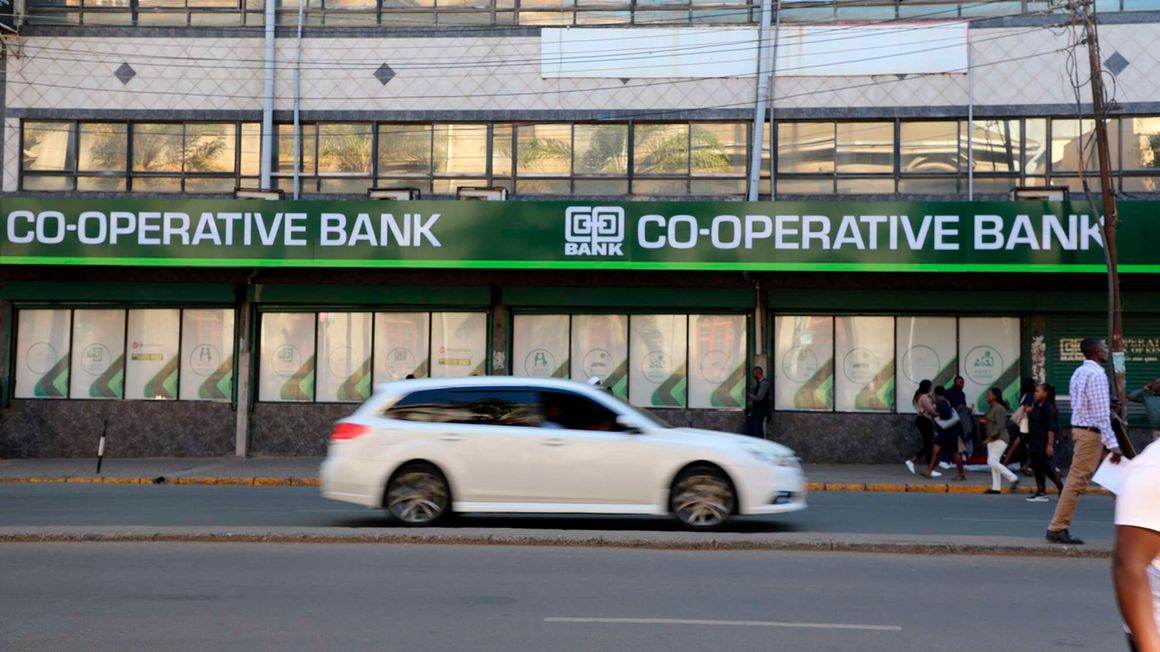
Co-operative bank along Moi Avenue in Nairobi on January 25, 2023. PHOTO | LUCY WANJIRU | NMG
Co-operative Bank of Kenya has raised its daily ATM [automated teller machine] withdrawal limit by 50 percent to Sh60,000, as banks start reviewing their
daily transaction ceilings to reflect the reduced spending power among customers.The weakening Kenyan shilling has left customers worse off given that they need more money to buy the same amount of goods.
The purchasing power of the Sh1,000 note, for instance, has fallen by nearly half in the past decade, which means that it can only buy half of what it bought ten years ago.
Also read: Safaricom triples daily M-Pesa limits to Sh500,000
Co-op Bank has informed the customers of the review, the first in nearly a decade, that will enable those who need to withdraw amounts above Sh40,000 to use the over 600 ATMs across the country, instead of lining up at branches.
“Dear client, for your convenience, we have increased the total amount of money you can withdraw on our ATMs from Sh40,000 to Sh60,000 per day,” said the Nairobi Securities Exchange-listed bank in a message to customers.
Co-op Bank in February 2015 doubled the limit to Sh40,000, citing the need to relieve pressure from branches.
The limit per transaction will, however, be at Sh40,000 as the ATM limit, meaning that a customer requiring Sh60,000 will have to carry out two transactions.
Co-op Bank’s limit per transaction on its digital platform, M-Co-op Cash, is at Sh70,000.
The bank’s move mirrors that of Standard Chartered Bank Kenya which in February 2019 raised its daily ATM withdrawal limit from Sh40,000 to Sh60,000 with a maximum withdrawal per transaction set at Sh40,000.
KCB Bank Kenya and Equity Bank Kenya currently have a daily withdrawal limit of Sh50,000, with a Sh40,000 limit per maximum transaction.
Stanbic Bank Kenya’s daily limit is at Sh40,000, with the same figure being the maximum per transaction.
Smaller withdrawals mean the customers have to go to the ATMs more frequently, besides increasing the cash handling costs.
Customers withdrawing money via ATMs incur a cost of Sh36 per transaction, made up of banks’ commission and excise duty.
Many banks allow customers to withdraw at the ATM above the general cash value limits but this requires that they apply and get approval first.
Such arrangements are however still subject to the Sh40,000 limit per transaction, meaning that one will make multiple withdrawals to get their desired cash.
The ATM limit helps in the efficient operation of the machines so that they do not get emptied too quickly while the card limit is usually necessary to limit the damage on one’s account in case of fraud.
Higher daily limits at ATMs help banks to decongest branches, which many are increasingly using as advisory centres for small and large businesses, instead of for depositing and withdrawing money.
The raised limits also accommodate customers who may have reservations about transacting such sums of money from bank agents, especially those located in areas where security may be a challenge. Some agents also run out of float sometimes.
This comes weeks after telcos were allowed by the Central Bank of Kenya to increase their limits as they sought to allow mobile banking customers more headroom to do more transactions. This saw Safaricom triple the daily transaction limits on its mobile money platform to Sh500,000, strengthening its capacity to compete with commercial banks in the lucrative digital payments market.
Read: Co-op Bank Q3 profit rises to Sh18 billion
The telco has also allowed individuals and businesses to hold Sh500,000 in their M-Pesa wallets as mobile money evolves from person-to-person payments to an e-commerce tool.
→ palushula@ke.nationmedia.com




No comments :
Post a Comment